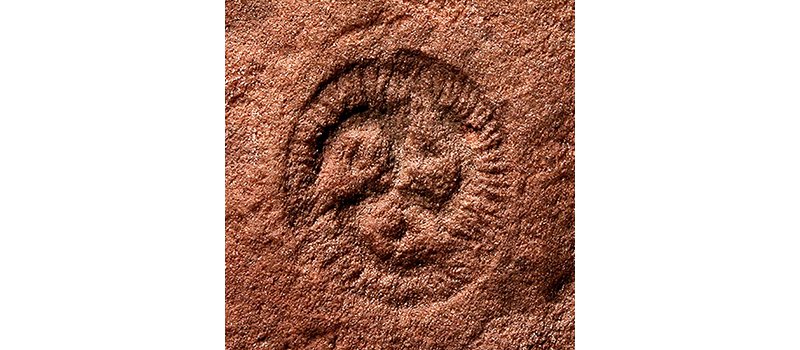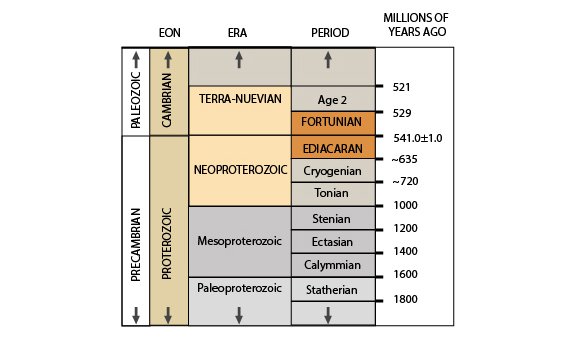
May 10, 2018
Research Highlight
Crossing the Boundary of the Ediacaran and the Cambrian

Fossil photo from the Ediacara Biota, Tribrachidium heraldicum.Image credit: James Gehling.
A new study of Ediacara Biota indicates that the Ediacaran and Cambrian Periods on Earth may not have been as separate as previously envisioned. Instead, they could be considered part of an ‘ecological and evolutionary continuum.’
The Ediacara Biota refers to the earliest communities of complex, macroscopic, multicellular organisms known on Earth. These communities appeared late in the Ediacaran Period, just before the Cambrian Explosion, a time when most of the major animal phyla on the planet appear in the fossil record. The Ediacara Biota represent an important stepping-stone in the evolution of animals.
These communities have previously been divided in three Assemblages: the Avalon (the oldest), the White Sea, and the Nama. The Avalon refers to the initial appearance of these communities in the fossil record; while the White Sea and Nama assemblages show novel ecological strategies, including diversity in body plans, sexual reproduction, and movement. Even though most Ediacara taxa went extinct by the end of the Ediacaran, these ecological innovations persisted. Strategies like sexual reproduction were employed by younger animal-dominated communities that came after the traditionally accepted Ediacaran-Cambrian boundary.

The Ediacaran Period lasts from the end of the Cryogenian Period (635 million years ago) to the start of the Cambrian Period (~541 million years ago). The Ediacaran is named after South Australia's Ediacara Hills.Image credit: NASA Astrobiology.
The study, “Ecological Expansion and Extinction in the Late Ediacaran: Weighing the Evidence for Environmental and Biotic Drivers ,” was published in the journal Integrative & Comparative Biology. The work was supported by NASA Astrobiology through the Exobiology Program.